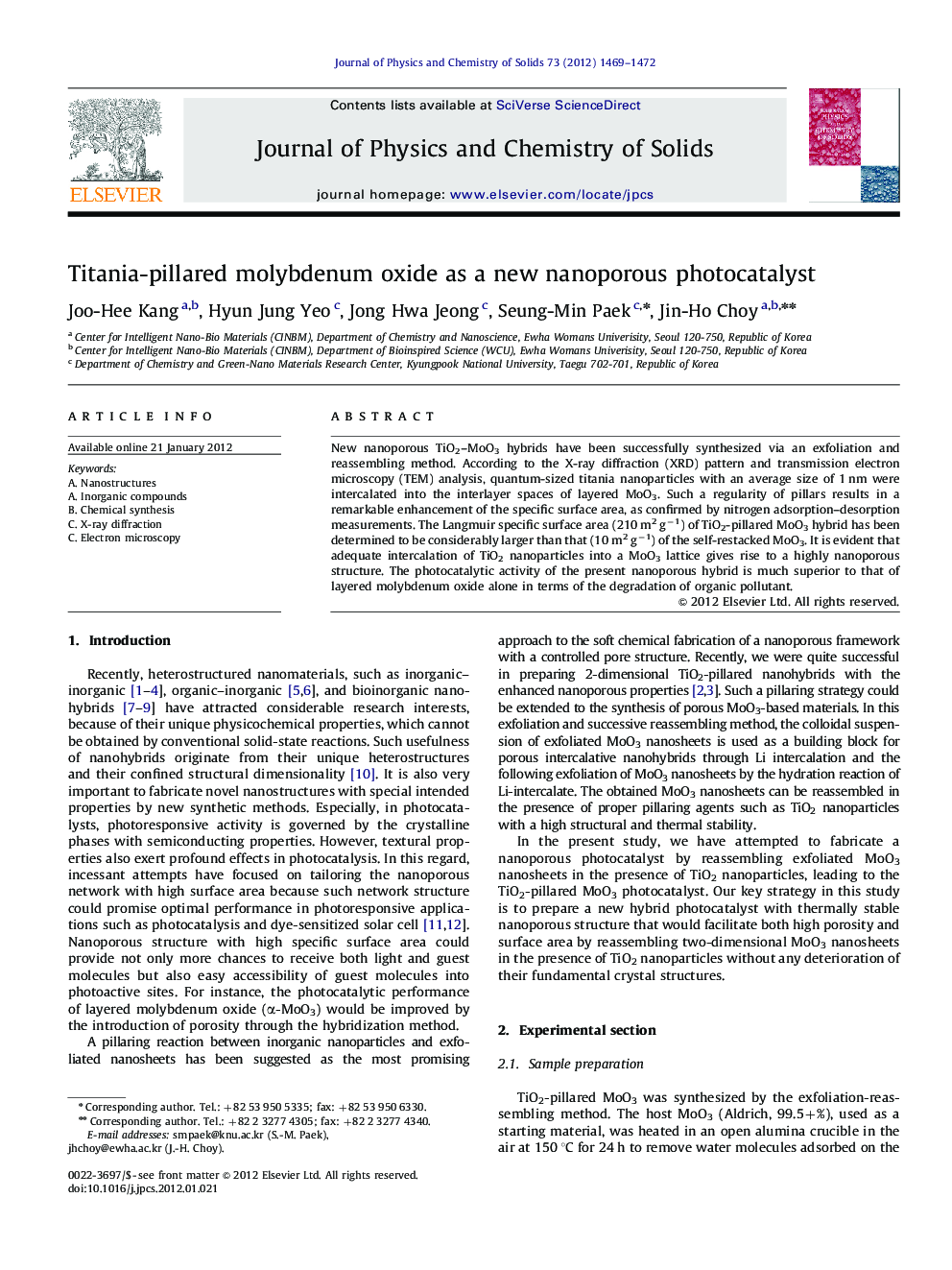| کد مقاله | کد نشریه | سال انتشار | مقاله انگلیسی | نسخه تمام متن |
|---|---|---|---|---|
| 1515834 | 1511554 | 2012 | 4 صفحه PDF | دانلود رایگان |

New nanoporous TiO2–MoO3 hybrids have been successfully synthesized via an exfoliation and reassembling method. According to the X-ray diffraction (XRD) pattern and transmission electron microscopy (TEM) analysis, quantum-sized titania nanoparticles with an average size of 1 nm were intercalated into the interlayer spaces of layered MoO3. Such a regularity of pillars results in a remarkable enhancement of the specific surface area, as confirmed by nitrogen adsorption–desorption measurements. The Langmuir specific surface area (210 m2 g−1) of TiO2-pillared MoO3 hybrid has been determined to be considerably larger than that (10 m2 g−1) of the self-restacked MoO3. It is evident that adequate intercalation of TiO2 nanoparticles into a MoO3 lattice gives rise to a highly nanoporous structure. The photocatalytic activity of the present nanoporous hybrid is much superior to that of layered molybdenum oxide alone in terms of the degradation of organic pollutant.
► Layered MoO3 is a potential photocatalyst.
► MoO3 was hybridized with TiO2 nanoparticle through exfoliation and reassembling.
► The resulting TiO2–MoO3 hybrid shows enhanced photocatalytic activity compared to MoO3 itself.
Journal: Journal of Physics and Chemistry of Solids - Volume 73, Issue 12, December 2012, Pages 1469–1472